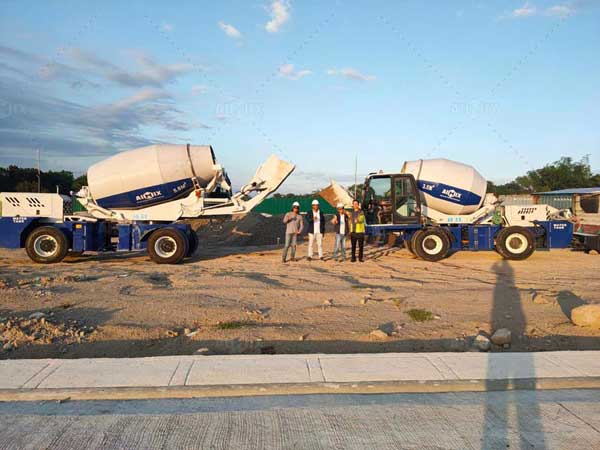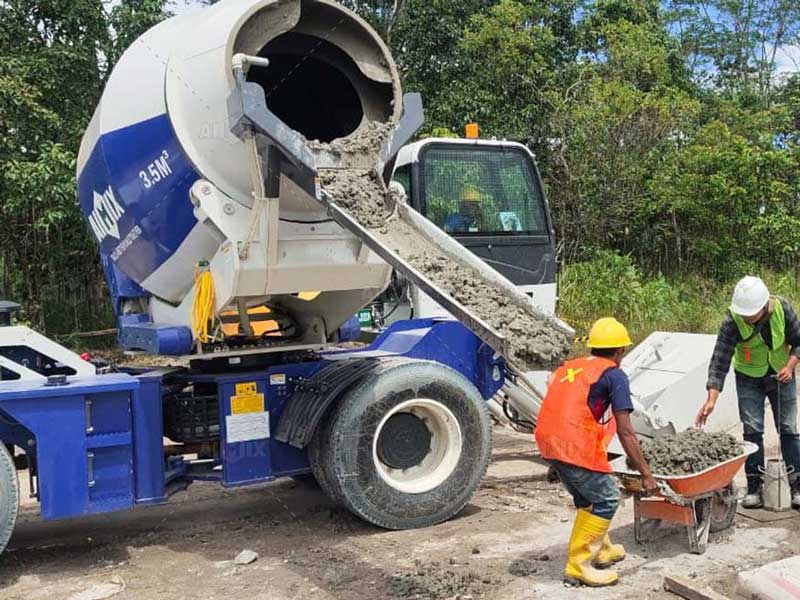Keeping a self-loading mobile concrete mixer clean is not just about aesthetics; it’s about ensuring optimal performance and longevity. Neglecting proper cleaning and maintenance can lead to decreased efficiency and costly repairs. In this article, we’ll outline the 10 essential steps for effectively cleaning a self-loading mobile concrete mixer to keep it running smoothly and efficiently.
The Cleaning Process
Step 1: Preparation
Before diving into the cleaning process, it’s essential to gather all the necessary equipment and materials. This includes safety gear such as gloves and goggles, as well as cleaning solutions and brushes. Additionally, ensure that the self loader concrete mixer is parked on a flat, stable surface and that all safety measures, such as emergency stop buttons, are in place.

Step 2: Exterior Cleaning
Start by giving the exterior of the mixer a thorough cleaning. Use a high-pressure water hose to remove any dirt, mud, or other debris that may have accumulated. For stubborn stains, a mild cleaning solution and a brush can be used to scrub the surfaces clean. Pay particular attention to areas around hinges, handles, and other moving parts.
Step 3: Interior Cleaning
Next, it’s time to tackle the interior of the mixer. Begin by removing any leftover concrete or aggregate from previous jobs. This can be done using a shovel or scraper. Once the bulk of the material has been removed, use a hose and scrub brush to thoroughly clean the drum, ensuring all residue is removed.
Step 4: Inspection
While cleaning, take the opportunity to inspect the mixer for any signs of damage or wear and tear. Check for cracks, dents, or any other abnormalities that may indicate potential issues. Pay close attention to areas such as the drum, mixing blades, and hydraulic components. Learn more details here: https://aimixglobal.com/self-loading-concrete-mixer-truck/.

Step 5: Lubrication
Proper lubrication is essential for ensuring smooth operation and preventing rust and corrosion. Apply lubricants to all moving parts and hinges, including the drum rollers, mixing blades, and discharge chute. Be sure to use lubricants that are compatible with the materials used in the mixer.
Step 6: Filter Cleaning
Filters play a crucial role in maintaining the efficiency of the mixer’s air and water systems. Remove and clean all filters, including the air intake filter and water pump filter. This will help ensure optimal performance and prevent clogs or other issues.
Step 7: Electrical System Check
The electrical system of the mixer should be inspected regularly to ensure safe and reliable operation. Check all wires, connections, and components for signs of damage or wear. Test functionality and safety features, such as emergency stop buttons and overload protection.
Step 8: Hydraulic System Maintenance
The hydraulic system is responsible for powering many of the mini self loading concrete mixer‘s essential functions. Check hydraulic fluid levels and condition, topping up or replacing fluids as needed. Inspect hoses, cylinders, and valves for leaks or damage, and address any issues promptly.
Step 9: Tire and Wheel Cleaning
Clean tires and wheels not only improve the appearance of the mixer but also contribute to safe operation. Remove any debris or buildup from tires and rims using a brush or pressure washer. Check tire pressure and tread depth, adjusting as necessary to ensure proper traction and stability.
Step 10: Final Inspection and Testing
Once all cleaning and maintenance tasks have been completed, take the time to revisit all components and systems. Double-check that everything is in proper working order and that no issues have been overlooked. Finally, conduct a test run to ensure that the mixer is operating as it should.
Conclusion
Regular cleaning and maintenance are essential for ensuring the continued performance and longevity of a self loading mobile concrete mixer. By following these 10 essential steps, operators can keep their mixers running smoothly and efficiently, minimizing downtime and costly repairs. By making cleaning and maintenance a priority, operators can extend the lifespan of their mixers and ensure they’re always ready to tackle the next job.